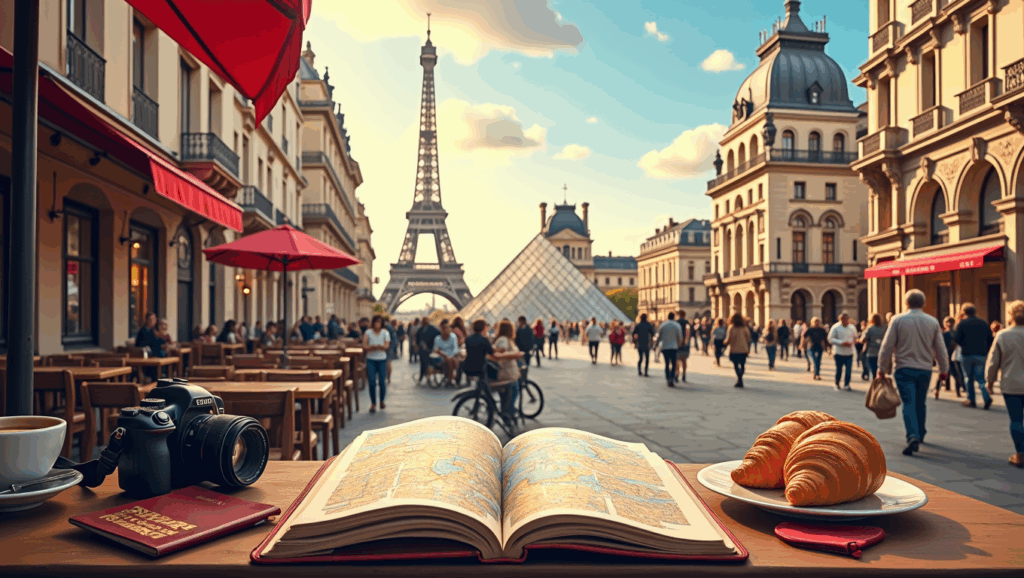Paris, The Capital City of France often referred to as the “City of Light,” is one of the most captivating destinations in the world. From its iconic landmarks like the Eiffel Tower and the Louvre Museum to its quaint cafés and cobblestone streets, this Ultimate Paris Travel Guide blends history, romance, art, and style in a way no other city does.
This Ultimate Paris Travel Guide is specifically designed to help you navigate the enchanting streets of Paris and experience its beauty in a way that only the Ultimate Paris Travel Guide can offer.
Whether you’re a first-time traveler or a seasoned globetrotter, Paris has something for everyone—majestic architecture, gourmet food, rich culture, and an unmistakable charm that leaves a lasting impression.
With our Ultimate Paris Travel Guide, you’ll discover the best locations, hidden gems, and must-try experiences the City of Light has to offer, making this Ultimate Paris Travel Guide an essential tool for your journey.
Table of Contents
- Your Ultimate Paris Travel Guide Awaits
- Quick Facts
- Best Time to Visit Paris
- How to Get There
- Where to Stay in paris
- Best Places to visit in paris, france
- Local Food to Try
- Sample Itinerary: 3 Days in Paris
- Travel Tips for Visiting Paris
- 1. Get a Metro Pass
- 2. Beware of Pickpockets
- 3. Learn Basic French Phrases
- 4. Don’t Skip the Line at Museums
- 5. Dress Smartly
- 6. Bring Comfortable Walking Shoes
- 7. Be Mindful of Dining Hours
- 8. Tipping Etiquette
- 9. Use Cash & Credit Cards Wisely
- 10. Be Prepared for the Weather
- 11. Embrace the Café Culture
- 12. Use Apps for Convenience
- Recommended Travel Gear for Paris
- 1. Comfortable Walking Shoes
- 2. Lightweight, Packable Backpack or Day Bag
- 3. Travel Adapter and Power Bank
- 4. Compact Umbrella or Raincoat
- 5. Sunglasses and Hat
- 6. Portable Water Bottle
- 7. Camera or Smartphone with Extra Memory
- 8. French Phrasebook or Translation App
- 9. Power Strip with USB Ports
- 10. Travel Insurance Documents
- 11. Small First-Aid Kit
- 12. French Vogue or Paris Guidebook
- FAQS – Trip to Paris, France
- 1. What is the best time to visit Paris?
- 2. What are the must-see landmarks in Paris?
- 3. How many days should I spend in Paris?
- 4. What is the public transportation like in Paris?
- 5. Do I need to speak French to visit Paris?
- 6. What currency is used in Paris?
- 7. What should I wear in Paris?
- 8. Is Paris safe for tourists?
- 9. What are the best areas to stay in Paris?
- 10. What should I try to eat in Paris?
- 11. How do I get from the airport to the city center?
- 12. What are some off-the-beaten-path places to visit in Paris?
- 13. Are there any free things to do in Paris?
- 14. Can I use my credit card in Paris?
- 15. Is Paris expensive to visit?
- Conclusion: Your Paris Adventure Awaits
Your Ultimate Paris Travel Guide Awaits
Why visit Paris? The reasons are endless. Art lovers can immerse themselves in masterpieces at the Louvre and Musée d’Orsay. Foodies can indulge in croissants, wine, cheese, and Michelin-starred restaurants. History buffs can walk in the footsteps of kings at Versailles or revolutionaries at Place de la Bastille. And romantics?
Well, there’s a reason Paris is considered the most romantic city in the world. A stroll along the Seine, a kiss under the Eiffel Tower, or a sunset at Montmartre is unforgettable.
This Ultimate Paris Travel Guide is your one-stop resource for planning the perfect trip to Paris, covering everything from the best times to visit and how to get there to where to stay, what to do, must-try local dishes, and practical travel tips.
Whether you’re dreaming, planning, or packing, this Ultimate Paris Travel Guide will help you make the most of your Paris adventure.
With our Ultimate Paris Travel Guide, you’ll discover the best locations, hidden gems, and must-try experiences the City of Light has to offer.
Let this Ultimate Paris Travel Guide be your companion as you explore the charm and vibrancy of Paris, creating memories that will last a lifetime.
This comprehensive guide is your one-stop resource for planning the perfect trip to Paris. It covers everything from the best times to visit and how to get there to where to stay, what to do, must-try local dishes, and practical travel tips.

This Ultimate Paris Travel Guide includes practical advice, stunning visuals, and unique insights that will empower you to navigate Paris like a true local.
Stay tuned for exclusive recommendations from your Ultimate Paris Travel Guide, tailored to make your trip memorable and enjoyable
We’ve included this Ultimate Paris Travel Guide to offer a sample itinerary and hand-picked affiliate resources to help you book everything from flights and hotels to tours and travel gear—saving you time and money.
Whether you’re dreaming about Paris, planning your trip, or packing your bags, this Ultimate Paris Travel Guide will help you make the most of your Paris adventure. Ready to fall in love with Paris?
Quick Facts
Let this Ultimate Paris Travel Guide be your companion as you explore the charm and vibrancy of Paris, creating memories that will last a lifetime.
Before diving into the heart of Paris, here are some essential facts and helpful details to know that will make your trip smoother and more enjoyable.
Country
Paris is the capital and most populous city in France. It’s located in the northern-central part of the country and serves as its cultural, political, and economic hub.
Language
- The official language is French, but many people in the tourism and hospitality industries speak English. Learning a few basic phrases in French—like bonjour (hello), merci (thank you), and s’il vous plaît (please)—can go a long way in making a good impression.
Currency
- France uses the Euro. Credit and debit cards are widely accepted, but it’s a good idea to carry some cash for markets, small bakeries, or local transportation.
Time Zone
- Central European Time (CET) / Central European Summer Time (CEST)
- Paris is in the CET time zone (UTC+1) and observes daylight saving time in summer (CEST, UTC+2).
Visa Requirements
- Travelers from the EU, UK, US, Canada, Australia, and many other countries can enter France without a visa for up to 90 days. For others, a Schengen visa may be required. Always check the latest requirements before traveling.
Power Plug Type
- Types C & E
- Voltage is 230V, frequency is 50Hz. Bring a universal travel adapter if your country uses a different plug type.
Internet & Connectivity:
- Wi-Fi is widely available in hotels, cafés, and public areas. Consider buying a local SIM card or an international eSIM for consistent connectivity on the go.
Safety Level
- Paris is safe for tourists, but like any major city, be mindful of pickpockets, especially in crowded areas like the Metro, tourist sites, and train stations.
Best Time to Visit Paris
Paris is a magical destination year-round, but the experience can vary widely depending on the time of year you visit. Understanding the seasons will help you decide when to go based on weather, crowds, events, and budget.

Spring (March to May)
Spring in Paris is postcard-perfect. As the city shakes off the winter chill, trees bloom and café terraces fill up with locals and tourists alike.
The weather is mild, making it ideal for exploring parks like Jardin du Luxembourg or taking a boat ride along the Seine. Tourist attractions begin to get busier, especially during Easter and school holidays, so booking in advance is wise. This is arguably the most romantic time to visit.
Summer (June to August)
Summer brings long daylight hours, warm temperatures (average highs of 25°C/77°F), and a festive vibe. Expect lively street performances, open-air events, and bustling markets. It’s also peak tourist season, so attractions can be crowded, and prices for flights and accommodation tend to be higher. If you don’t mind the crowds, Paris in the summer offers endless energy, outdoor dining, and a vibrant nightlife.
Fall (September to November)
Autumn is a lovely time to visit Paris. The summer crowds thin out, the air gets crisp, and the fall foliage gives parks like Bois de Boulogne and Jardin des Tuileries a golden glow. Cultural life returns in full swing—expect art exhibitions, concerts, and fewer queues at major landmarks. Temperatures average 11–17°C (52–63°F), so pack a light jacket.
Winter (December to February)
In this Ultimate Paris Travel Guide, we will cover essential information, tips, and insights that will ensure your Paris adventure is truly unforgettable.
Winter in Paris is cold but charming. Festive lights, Christmas markets, and fewer tourists make it a great time for budget travelers and those seeking a cozy, less hectic vibe. Major sales happen in January, and you can enjoy attractions without long lines. Just dress warmly—temperatures range from 3–7°C (37–45°F).
No matter when you visit, make sure to pack light and comfortable clothing, and don’t forget to bring an umbrella just in case! You can find a range of travel essentials on Amazon.
How to Get There
Paris is one of the most accessible cities in the world, welcoming millions of travelers by air, rail, and road every year. No matter where you’re coming from, reaching the City of Light is straightforward and convenient.
By Air
Paris has two major international airports:
- Charles de Gaulle Airport (CDG): Located about 25 km northeast of the city, CDG is the primary international gateway. It serves most long-haul flights and is well-connected to the city via train (RER B), bus, taxi, and ride-sharing services.
- Orly Airport (ORY): Located 13 km south of the city center, Orly is smaller and handles mostly domestic and European flights. It’s also well-connected to Paris by tram, bus, and taxi.
From either airport, you can reach central Paris in 30–60 minutes depending on your mode of transport.
Pro Tip: Pre-book an airport shuttle or check if your hotel offers a transfer service, especially if you’re arriving late.
By Train
Paris is a major European rail hub with seven main train stations, each serving different regions of France and international destinations.
- Eurostar: Connects Paris to London in just over 2 hours via the Channel Tunnel.
- Thalys: Offers fast trains to Brussels, Amsterdam, and Cologne.
- TGV (Train à Grande Vitesse): High-speed trains to cities like Lyon, Marseille, Bordeaux, and Geneva.
Main arrival station for Eurostar & Thalys: Gare du Nord.
By Bus
Budget-friendly options like FlixBus, BlaBlaBus, and Eurolines connect Paris with cities across Europe. Though slower than trains, buses are affordable and comfortable, especially for short to mid-range distances.
By Car
If you’re on a European road trip, driving to Paris is an option—but beware of narrow streets, traffic, and limited parking. Park outside the center and use public transport.
Where to Stay in paris
Choosing the right place to stay in Paris can significantly shape your travel experience. With 20 districts (known as arrondissements), each neighborhood offers a unique vibe—whether you’re looking for romance, history, luxury, or a local feel.
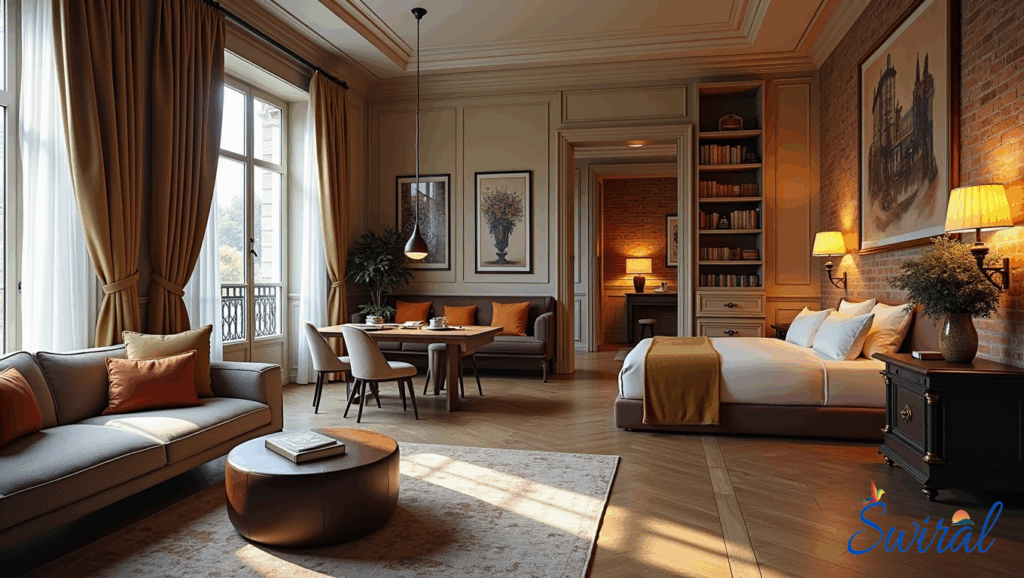
Here’s a breakdown to help you find the perfect spot for your Parisian getaway, along with hotel recommendations for every budget.
Best Neighborhoods to Stay
- Le Marais (3rd & 4th arr.): Trendy and historic, Le Marais is full of boutiques, galleries, and bistros. It’s centrally located and walkable to major sites like Notre-Dame and the Seine.
- Latin Quarter (5th arr.): Rich in history, bookshops, and student life. Great for culture lovers and those wanting an intellectual, old-Paris charm.
- Saint-Germain-des-Prés (6th arr.): Upscale, elegant, and full of Parisian sophistication. Ideal for café culture, luxury shopping, and quiet strolls.
- Montmartre (18th arr.): Bohemian and artsy, this hilltop district offers stunning views from Sacré-Cœur and a village-like feel, though it’s a bit farther from central sites.
- 1st arr. (Louvre area): Close to the Louvre, Tuileries, and major landmarks—perfect for first-time visitors seeking proximity to major attractions.
Accommodation by Budget
- Luxury:
- Le Meurice – Historic 5-star hotel near the Louvre.
- Hôtel Plaza Athénée – Classic Parisian luxury with Eiffel Tower views.
- Mid-Range:
- Hotel Le Six – Stylish and centrally located in the 6th.
- Hotel Ekta – Chic boutique hotel near Champs-Élysées.
- Budget:
- The People Paris – Friendly hostel with modern vibes.
- Generator Paris – Hip, social hostel with private rooms and dorms.
Tip: Paris hotels can be pricey, especially during peak season. Book early, check for deals on platforms like Booking.com, and consider boutique hotels or vacation rentals for more space and local charm.
Best Places to visit in paris, france
Paris is packed with iconic landmarks, charming neighborhoods, and unforgettable experiences. Whether it’s your first visit or your fifth, there’s always something new to explore. Here’s a curated list of must-see sights and activities you shouldn’t miss in the City of Light.
1. Eiffel Tower
The Eiffel Tower is Paris’s most iconic symbol and a must-visit for any traveler. Standing 330 meters tall, it offers breathtaking views of the city from three different levels.
You can take an elevator or climb the stairs (great for the fit and adventurous!) to the second level before riding up to the summit.
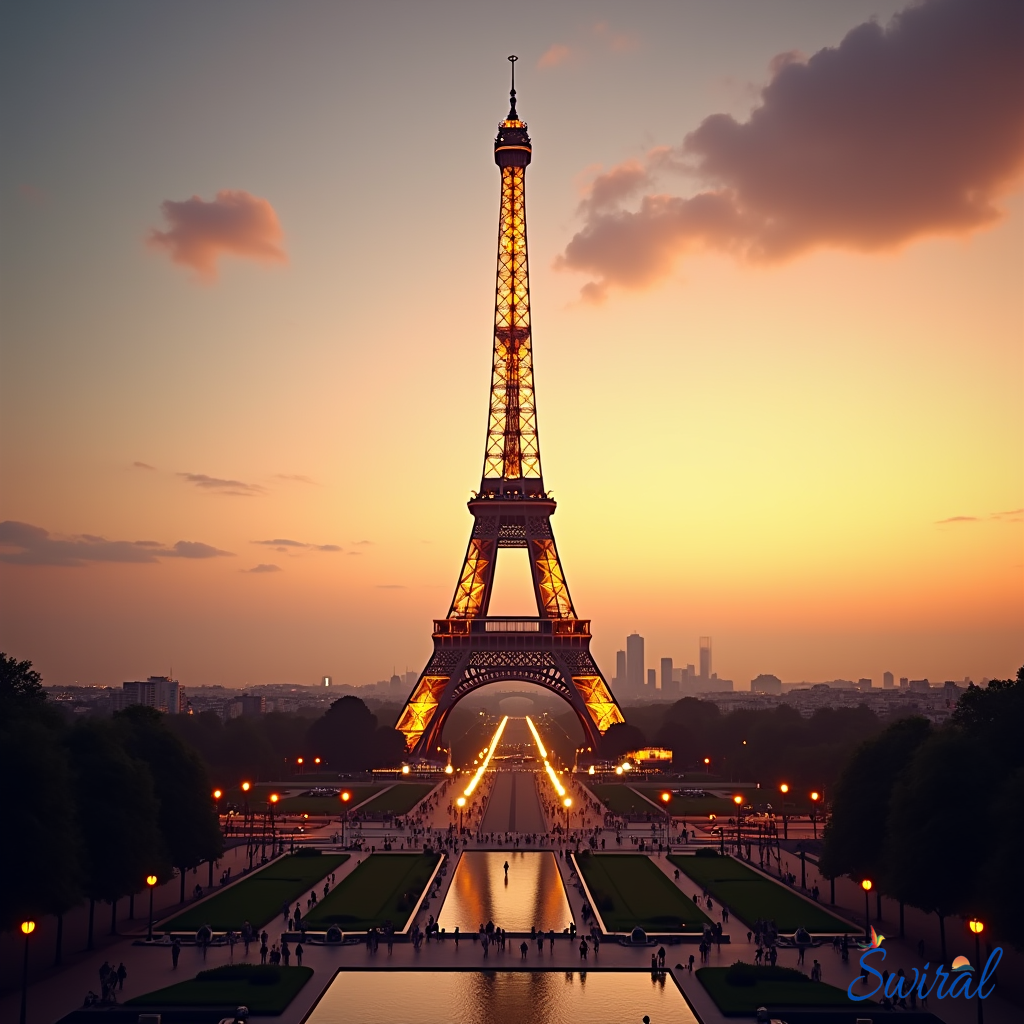
Dining at Le Jules Verne restaurant offers a luxurious experience, or you can enjoy a budget-friendly picnic at the Champ de Mars park below.
Visit at night to catch the tower’s sparkling light show that happens every hour after sunset—it’s pure magic.
2. The Louvre Museum
The Louvre is more than just a museum—it’s a world-renowned cultural institution. Housing over 35,000 works of art, it’s home to the Mona Lisa, Venus de Milo, and countless other masterpieces.
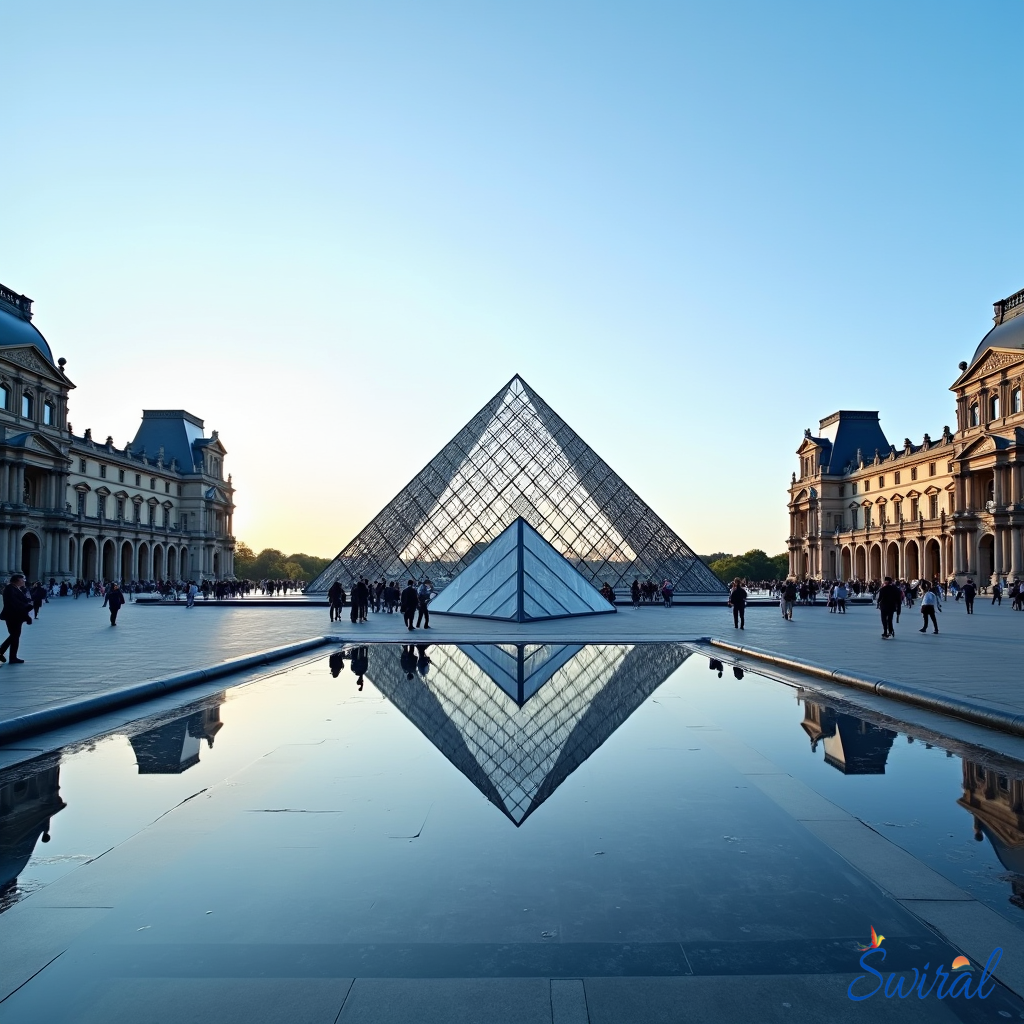
Set aside at least half a day (or more!) to explore. You’ll walk through ancient Egyptian artifacts, Renaissance paintings, and opulent royal apartments.
The glass Pyramid entrance is itself an architectural highlight. To make the most of your visit, book a guided tour or download the museum app to navigate its vast collection with ease.
3. Notre-Dame Cathedral
Even in its post-fire restoration phase, Notre-Dame Cathedral remains a historic and cultural treasure. This 850-year-old Gothic masterpiece sits on Île de la Cité, the very heart of Paris.
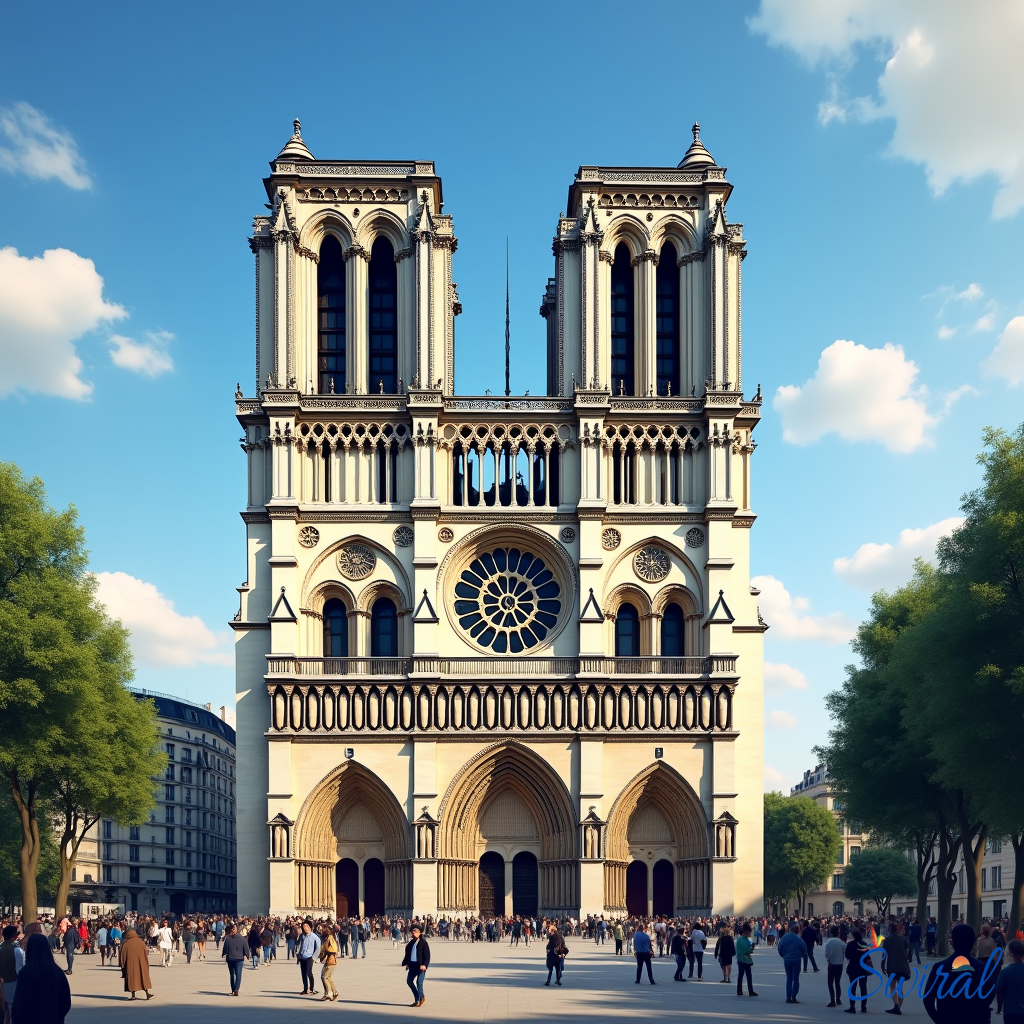
Admire the detailed façade with its iconic gargoyles, rose windows, and twin bell towers. While interior access is currently limited, the surrounding area—featuring Shakespeare & Company bookstore and the Square Jean XXIII gardens—is perfect for a scenic stroll.
Visit nearby Sainte-Chapelle to marvel at some of the most stunning stained-glass windows in the world.
4. Champs-Élysées & Arc de Triomphe
The Champs-Élysées is Paris’s most famous boulevard, ideal for shopping, sightseeing, and soaking in Parisian energy. Lined with flagship stores, theaters, and cafés, it’s a favorite among fashion lovers and tourists alike.
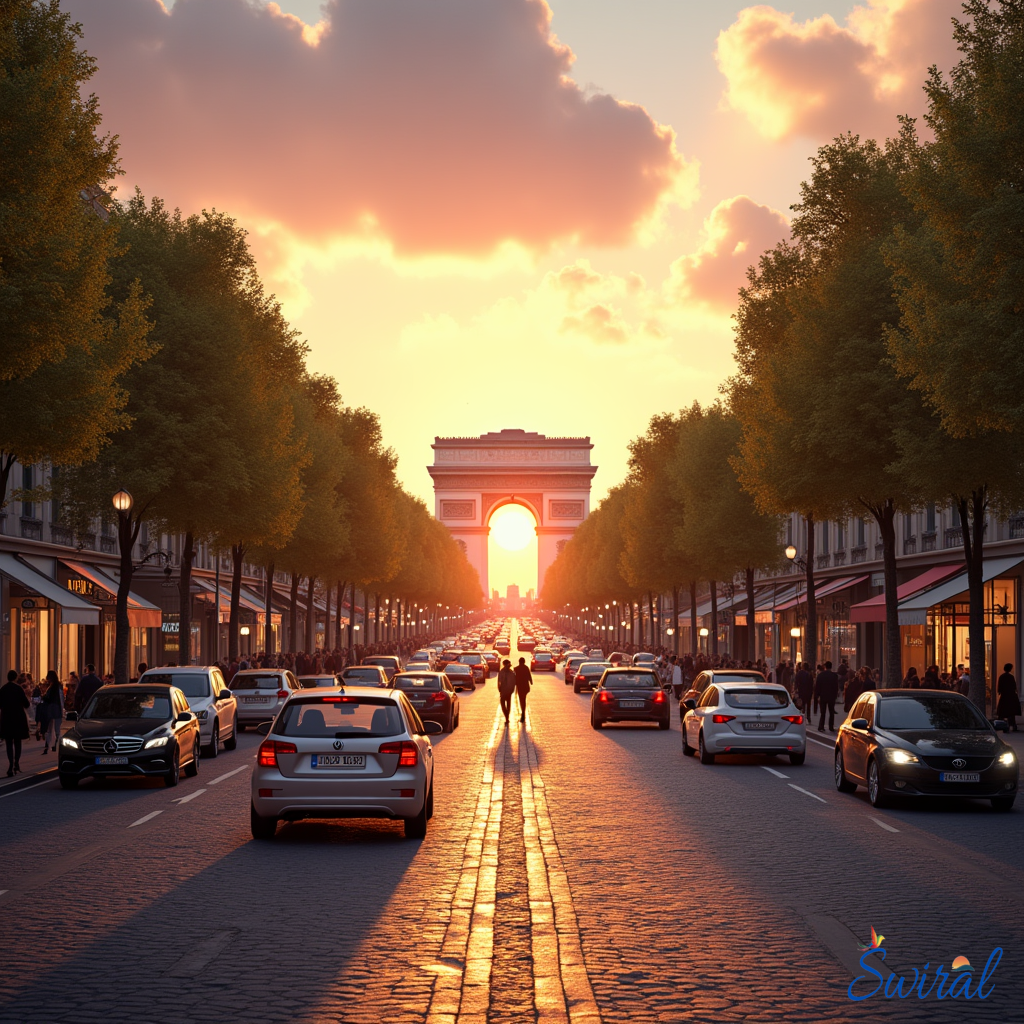
At the western end sits the Arc de Triomphe, a grand monument honoring those who fought for France. Climb its 284 steps (or take the elevator) for a spectacular view of the 12 radiating avenues, including the Eiffel Tower.
Go in the late afternoon to catch a stunning sunset over the city skyline.
5. Montmartre & Sacré-Cœur
Montmartre is a bohemian hilltop district known for its art, history, and romantic charm. Once home to Picasso and Dali, it still buzzes with creative spirit. Wander through Place du Tertre, where local artists display their work and offer portrait sketches.
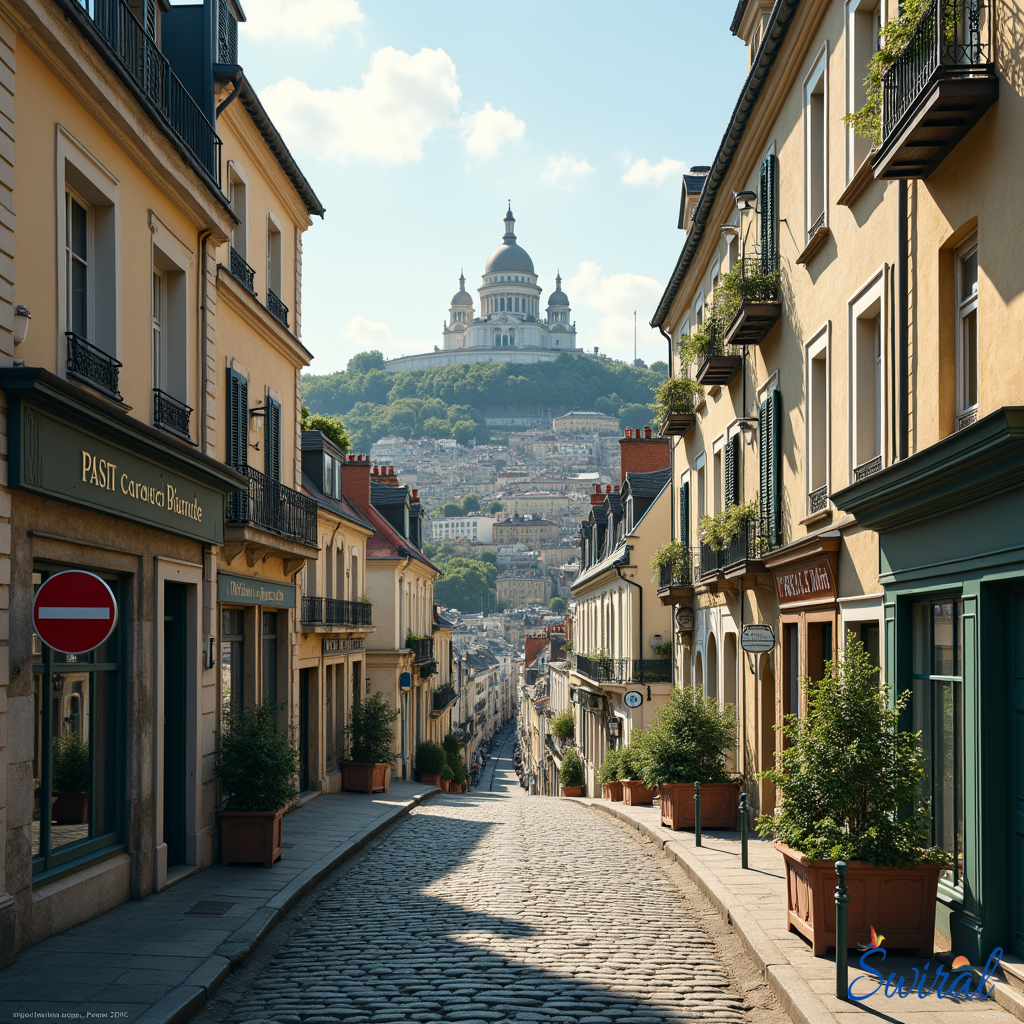
The white-domed Sacré-Cœur Basilica crowns the hill, offering panoramic views of Paris. Entrance is free, and you can even climb to the dome for an even higher viewpoint. Don’t miss a sunset here—musicians often play on the steps, creating a magical atmosphere.
6. Seine River Cruise
A Seine River cruise is a relaxing way to take in Paris’s beauty from the water. Cruises typically last an hour and pass by top landmarks such as the Eiffel Tower, Notre-Dame, Louvre, and Pont Alexandre III.
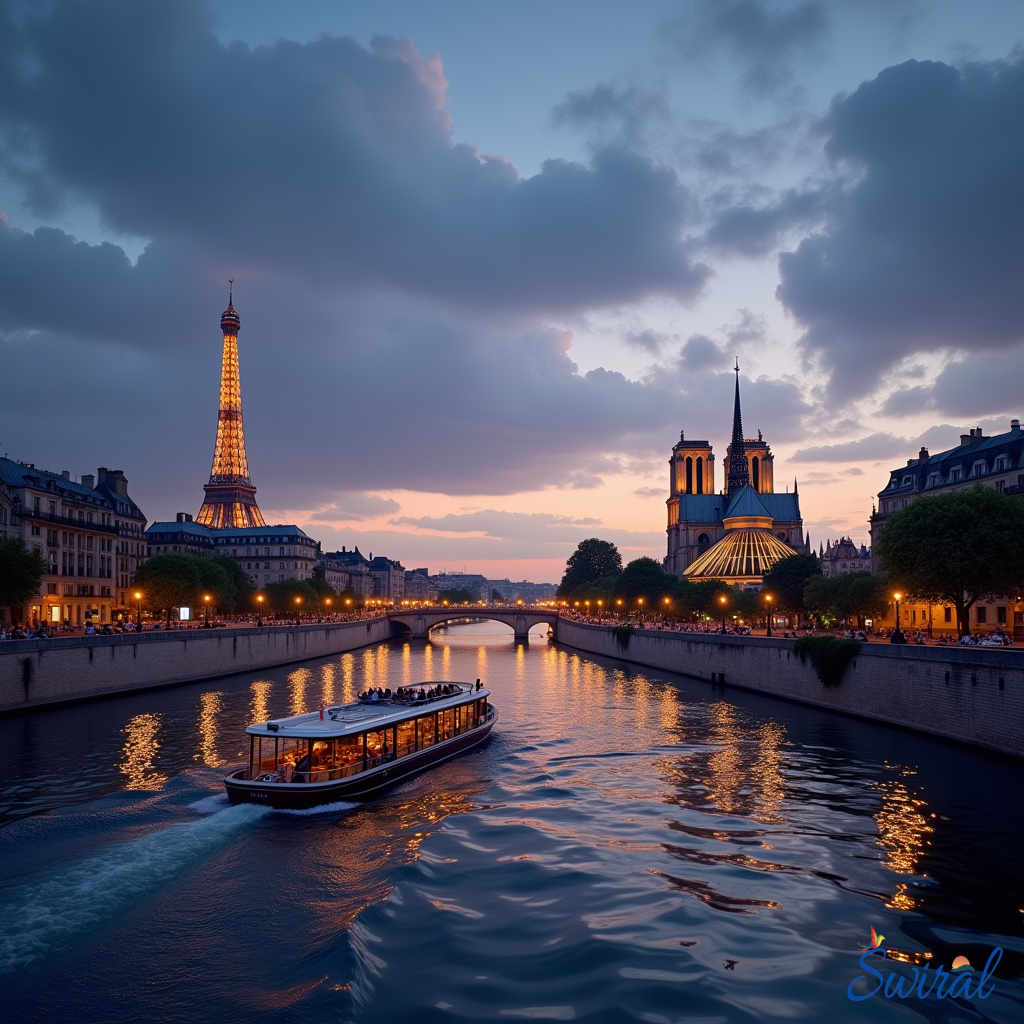
Opt for a Bateaux Mouches or Vedettes de Paris daytime cruise for sightseeing, or book a dinner cruise for a romantic, candle-lit experience with gourmet French cuisine. Sunset cruises are especially popular and perfect for photography. Booking in advance online can often save money and secure better seating.
7. Local Parisian Experiences
Sometimes the best things to do in Paris are the simplest. Grab a croissant and espresso at a sidewalk café, browse a local street market like Rue Cler or Marché Bastille, or enjoy a bottle of wine in the Jardin des Tuileries.
With this Ultimate Paris Travel Guide, we aim to provide you with everything you need to create the ultimate Parisian experience.
Explore hidden passages (covered arcades), shop in vintage boutiques, or listen to street musicians by the Seine. Paris is made for walking, so ditch the strict itinerary and let the city surprise you—you’ll find magic around every corner.
Local Food to Try
Paris is a culinary paradise. From world-famous pastries to rich, savory dishes, every meal in the city can be a gourmet experience. Whether you’re dining at a Michelin-starred restaurant or grabbing a baguette from a neighborhood boulangerie, these are the local French foods you absolutely must try while in Paris.
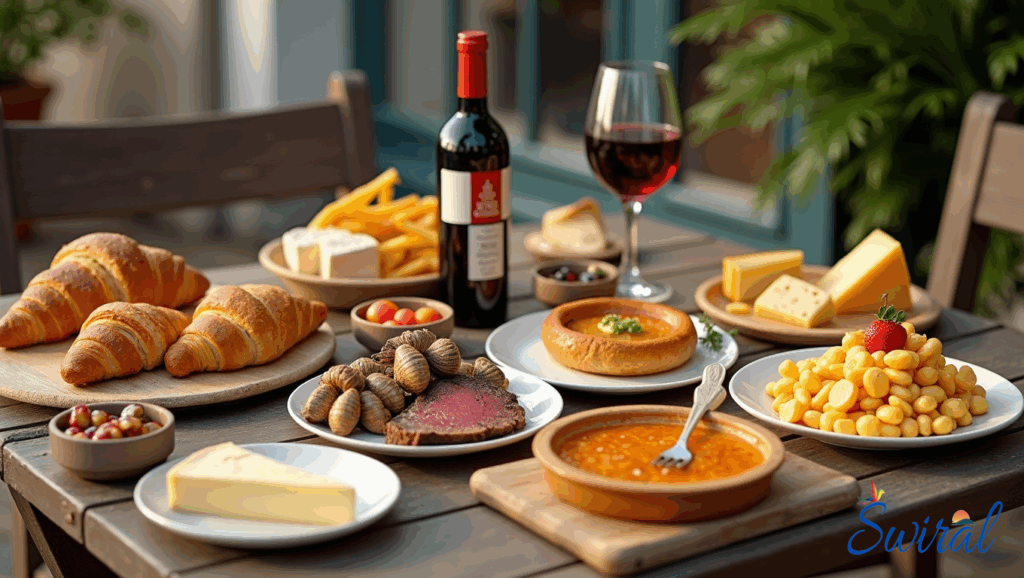
As you read through this Ultimate Paris Travel Guide, remember to take notes on your favorite spots and experiences to ensure your journey is as fulfilling as possible.
Croissant & Pain au Chocolat
Start your morning the Parisian way—with a buttery, flaky croissant or a rich pain au chocolat (chocolate-filled croissant). These pastries are best fresh out of the oven from a local boulangerie.
Don’t settle for touristy cafés—head to artisanal spots like Du Pain et des Idées or La Maison d’Isabelle for the real deal.
Baguette
The French baguette is more than just bread—it’s an institution. Crispy on the outside, soft on the inside, it’s perfect on its own or with cheese, butter, or jam.
Pick one up from an award-winning bakery like Le Grenier à Pain and enjoy it during a picnic at the Jardin du Luxembourg or along the Seine.
Escargots (Snails)
A classic French delicacy, escargots are typically served in garlic-parsley butter and are surprisingly delicious. They’re more of a texture experience and are often found in traditional Parisian bistros. Try them at L’Escargot Montorgueil for an authentic first-time experience.
Crème Brûlée
This creamy vanilla custard with a caramelized sugar top is one of France’s most beloved desserts. Tap the crisp top with your spoon and savor the smoothness underneath. You’ll find it in many bistros, but Le Procope, Paris’s oldest café, serves an excellent version.
Steak Frites
Simple yet satisfying, steak frites is grilled steak served with crispy French fries. It’s a staple on Parisian bistro menus. For an indulgent meal, check out Le Relais de l’Entrecôte, where the steak is served with a legendary secret sauce.
French Cheese
Paris is heaven for cheese lovers. Sample soft brie, tangy roquefort, and creamy camembert from a local fromagerie. For a real treat, join a cheese tasting tour or create your own DIY board to enjoy with wine.
Bonus: Wine & Cheese Picnic
Buy some local cheese, cured meats, a fresh baguette, and a bottle of Bordeaux or Burgundy, and head to a scenic spot like Parc des Buttes-Chaumont or along the Canal Saint-Martin. There’s nothing more Parisian than a picnic under the open sky.
Sample Itinerary: 3 Days in Paris

Day 1: Iconic Paris
Morning
Breakfast at a Parisian Café: Kickstart your day the Parisian way at a classic café like Café de Flore or Les Deux Magots. Enjoy a buttery croissant and a cup of café crème while people-watching. These spots are famous for their historic association with artists and intellectuals.
Eiffel Tower: After breakfast, make your way to the Eiffel Tower, Paris’s most iconic landmark. Arrive early to avoid the long lines, especially if you’re going to the summit. The views are unparalleled, and you can take in the city’s landmarks from above. If you’re feeling active, you can even climb the 674 steps to the second level (instead of taking the elevator).
Seine River Cruise: Once you’re done at the Eiffel Tower, stroll along the Seine and board a Bateaux Mouches or Vedettes de Paris river cruise. This gives you a different perspective of Paris, passing by famous landmarks like the Louvre, Notre-Dame, and Musée d’Orsay. It’s a relaxing way to get your bearings in the city.
Afternoon
Lunch in the Latin Quarter: Head to the Latin Quarter, an area known for its lively atmosphere and bistros. Try Chez René for classic French dishes like duck confit or escargot. The Latin Quarter is also home to Paris’s oldest bookshop, Shakespeare & Company, which you can visit after lunch.
Notre-Dame & Île de la Cité: After lunch, take a short walk to Île de la Cité, where you’ll find Notre-Dame Cathedral. Even though the cathedral is under restoration due to the 2019 fire, its imposing Gothic façade is still awe-inspiring. Don’t miss the charming Square Jean XXIII behind the cathedral, a tranquil spot with beautiful views of the Seine.
Sainte-Chapelle: If you have time, head to Sainte-Chapelle, just a short walk away. This Gothic chapel is renowned for its stunning stained-glass windows that depict biblical stories in vibrant colors.
Evening
Dinner and Stroll through the Tuileries: For dinner, enjoy classic French cuisine at Le Fumoir, a charming restaurant located near the Louvre. Afterward, take a relaxing stroll through the Tuileries Gardens, which are beautifully lit at night.
Sunset Seine Dinner Cruise: If you want to add a touch of romance to your first day, book a Seine dinner cruise. The views of Paris at sunset from the river are unforgettable as you pass landmarks like the Eiffel Tower, the Louvre, and Notre-Dame. The dinner cruise is a great way to enjoy both Parisian food and views in one experience.
Day 2: Art, History & Local Vibes
Morning
Louvre Museum: After breakfast, head to the Louvre Museum for a cultural deep dive. Home to over 35,000 pieces of art, including the Mona Lisa and the Venus de Milo, the Louvre is one of the largest and most famous museums in the world. It’s easy to get overwhelmed, so plan your visit around a few highlights or consider joining a guided tour to help navigate the museum’s vast collection.
Lunch at Le Fumoir: After exploring the Louvre, stop for lunch at Le Fumoir, a cozy and chic restaurant offering traditional French fare in a stylish setting. The restaurant is located just behind the Louvre, making it a convenient stop before continuing your sightseeing.
Afternoon
Palais Royal & Galerie Vivienne: Take a short walk to Palais Royal, a peaceful garden surrounded by elegant arcades. Afterward, explore the beautiful Galerie Vivienne, one of Paris’s covered arcades filled with boutique shops and charming cafés.
Montmartre: In the afternoon, head to Montmartre, Paris’s bohemian heart. Begin at Place du Tertre, where local artists sell their paintings and sketches. Wander the narrow cobbled streets and make your way to the Espace Dalí, which showcases the surreal works of Salvador Dalí. Climb up to Sacré-Cœur Basilica for some of the best views of Paris. The basilica’s white-domed structure stands atop one of the city’s highest hills and is visible from all over the city.
Evening
Dinner in Montmartre: For dinner, try a classic Montmartre bistro such as Le Consulat or La Maison Rose. These charming spots have a traditional Parisian atmosphere and are perfect for sampling French specialties.
Moulin Rouge Show: If you’re in the mood for a night out, book tickets for a Moulin Rouge cabaret show. This world-famous venue offers a glamorous Parisian entertainment experience, with colorful performances, extravagant costumes, and a vibrant atmosphere.
Day 3: Culture & Hidden Gems
Morning
Musée d’Orsay: Begin your final day in Paris with a visit to the Musée d’Orsay, housed in a former railway station. The museum boasts an impressive collection of Impressionist and Post-Impressionist art, including works by Monet, Van Gogh, and Degas. The museum itself is an architectural masterpiece, with its expansive glass roof and stunning clock tower.
Coffee Break: After your museum visit, head to the museum’s elegant café, which has floor-to-ceiling windows with views of the Seine. Enjoy a coffee or pastry while soaking in the museum’s stunning atmosphere.
Afternoon
Picnic at Jardin du Luxembourg: Spend your afternoon at the Jardin du Luxembourg, one of Paris’s most beautiful parks. Pick up a baguette, cheese, and wine from a nearby fromagerie and create your own picnic in the park. The Luxembourg Gardens are a peaceful oasis where you can relax by the fountains, stroll among the statues, or just people-watch.
Le Marais: After lunch, head to the Le Marais district, one of the trendiest neighborhoods in Paris. Wander through its narrow streets lined with chic boutiques, art galleries, and charming cafés. Stop by Place des Vosges, one of Paris’s oldest squares, known for its beautiful arcades and red-brick buildings.
Evening
- Dinner at Septime: For your last dinner in Paris, indulge in a meal at Septime, a Michelin-starred restaurant known for its modern French cuisine. The ambiance is stylish yet laid-back, and the seasonal menu is a true treat for the senses.
- Nightcap at Le Perchoir: End your Parisian adventure with a nightcap at Le Perchoir, a trendy rooftop bar offering panoramic views of the city. Sip on a cocktail while admiring the Parisian skyline, including the shimmering Eiffel Tower.
Travel Tips for Visiting Paris
1. Get a Metro Pass
Paris has an excellent public transportation system, and the Paris Métro (subway) is the quickest and most convenient way to get around the city. Consider buying a Navigo Day Pass for unlimited travel within central Paris zones.
If you’re planning on using the metro frequently, the Carnet (a pack of 10 single-ride tickets) is also a cost-effective option. The metro stations are well-marked, and the trains are usually punctual, so it’s easy to get from one attraction to another.
2. Beware of Pickpockets
As with any major tourist destination, Paris has its share of pickpockets. Be vigilant in crowded places, such as Montmartre, Champs-Élysées, and around major tourist sites like the Louvre and Eiffel Tower.
Keep your valuables close, use anti-theft bags, and be cautious around street performers or people asking for donations, as these can sometimes be distractions for theft.
3. Learn Basic French Phrases
While many Parisians speak English, especially in tourist areas, it’s always appreciated if you make an effort to speak a few basic phrases in French.
Simple greetings like “Bonjour” (Good morning) or “Merci” (Thank you) go a long way in showing respect for the local culture. When asking for help or directions, start with a polite “Excusez-moi” (Excuse me) to grab someone’s attention.
4. Don’t Skip the Line at Museums
Paris’s major attractions like the Louvre, Musée d’Orsay, and Eiffel Tower can have long queues, especially during peak tourist season. To save time, book tickets online in advance.
Many museums also offer skip-the-line passes or guided tours, which can save you both time and frustration. Alternatively, visit museums during off-peak hours, typically in the early morning or late afternoon.
5. Dress Smartly
While Paris is known for its fashion scene, you don’t need to dress like a runway model to fit in. However, Parisians do tend to dress more stylishly compared to tourists, so avoid looking overly casual (like wearing flip-flops or athletic wear) when out and about.
Opt for comfortable yet chic outfits—think comfortable shoes, a well-fitted jacket, and a scarf. Parisians also appreciate good hygiene, so be mindful of your appearance, especially in finer restaurants and cultural sites.
6. Bring Comfortable Walking Shoes
Paris is best explored on foot, so comfortable shoes are a must! Many of the city’s best attractions are within walking distance of one another, and cobbled streets can be tricky to navigate in anything other than sturdy, flat shoes. Pack a pair of comfortable sneakers or stylish flats, and don’t forget to bring a backup pair if you plan on walking for hours.
7. Be Mindful of Dining Hours
In Paris, the dining culture is relaxed, but there are specific hours for meals. Breakfast is typically served from 7:30 AM to 10:30 AM, lunch runs from 12:00 PM to 2:00 PM, and dinner starts late, around 7:30 PM to 9:00 PM, and often goes until midnight. Many restaurants close between lunch and dinner service, so plan accordingly. If you’re visiting popular spots for lunch, try to get there earlier to avoid waiting.
8. Tipping Etiquette
Tipping in Paris is generally not as customary as in some other countries like the U.S. A service charge is usually included in restaurant bills, marked as “service compris.” However, rounding up the bill or leaving a small tip of 5% to 10% is appreciated for good service. Similarly, if a hotel bellhop helps with your luggage, a small tip of €1–€2 per bag is customary.
9. Use Cash & Credit Cards Wisely
Credit cards are widely accepted in Paris, especially in larger stores, restaurants, and hotels. However, smaller cafés or markets may only take cash.
It’s a good idea to carry some cash (around €50–€100) for small purchases, tips, or in case you find a place that doesn’t accept cards. ATMs are easy to find, but keep in mind that foreign cards may incur additional fees, so use them sparingly.
10. Be Prepared for the Weather
Paris has a temperate climate, but weather can be unpredictable. Pack for a range of conditions—bring a light jacket or sweater, especially in the spring and fall when temperatures can fluctuate. It’s also a good idea to carry an umbrella or a raincoat since Paris experiences frequent light rain, especially in the winter months.
11. Embrace the Café Culture
Take time to relax and embrace the iconic café culture in Paris. Don’t rush through your meals—sit back, enjoy a coffee or wine, and people-watch.
Parisians take their time with meals and conversations, so don’t feel pressure to leave immediately after eating. Visit famous cafés like Les Deux Magots or Café de Flore in the Saint-Germain-des-Prés neighborhood for a quintessential Parisian experience.
12. Use Apps for Convenience
Paris has a number of helpful apps that will make your visit easier:
- Citymapper for metro and bus routes.
- RATP for public transportation schedules.
- TheFork to reserve tables at top restaurants.
- TripAdvisor or Google Maps for restaurant and attraction reviews.
Recommended Travel Gear for Paris

1. Comfortable Walking Shoes
Paris is a city made for walking, and you’ll likely be exploring its cobblestone streets, parks, and galleries on foot. Comfortable walking shoes are essential. Opt for stylish sneakers or comfortable flats that can handle long days of sightseeing without compromising your fashion sense. If you’re visiting during colder months, bring a pair of water-resistant boots to keep your feet warm and dry.
2. Lightweight, Packable Backpack or Day Bag
You’ll want a small backpack or a crossbody bag for daily outings. This will allow you to carry your essentials like a water bottle, a camera, a map, and any shopping you might pick up along the way.
Choose something lightweight and secure with multiple compartments to keep your items organized. A bag with an anti-theft design (like one with lockable zippers or hidden pockets) can be especially helpful for staying safe in crowded areas.
Our in ultimate travel gear guide will provide in detail about all the game changing travel gear for all kinds for travellers.
3. Travel Adapter and Power Bank
Paris uses the Type C and Type E plugs, so make sure to bring a travel adapter if your devices use a different plug type. A power bank is also a smart addition to keep your phone charged while out and about, especially if you’re using GPS or taking photos during your sightseeing.
Many cafes and public spaces in Paris offer free Wi-Fi, so having your phone ready to connect is a huge benefit.
4. Compact Umbrella or Raincoat
The weather in Paris can be unpredictable, especially during the fall and winter months. A compact, foldable umbrella will fit easily in your bag and keep you dry during sudden rain showers. Alternatively, you might want to pack a lightweight raincoat or waterproof jacket, which is especially handy for walking around the city in wet conditions.
5. Sunglasses and Hat
While Paris is known for its cooler climate, sunny days still occur, particularly in spring and summer. A pair of stylish sunglasses can protect your eyes and add a chic flair to your outfit. A wide-brimmed hat or fedora can provide extra sun protection and also elevate your Parisian look.
6. Portable Water Bottle
While you can easily find bottled water at cafes and grocery stores, it’s eco-friendly and convenient to bring your own reusable water bottle. Paris offers plenty of public fountains, especially in parks and squares, where you can refill your bottle for free. Staying hydrated is key when you’re out exploring the city all day.
7. Camera or Smartphone with Extra Memory
Paris is a city that begs to be photographed, from the Eiffel Tower to the charming Montmartre streets. If you’re a photography enthusiast, bring a camera with extra memory cards and batteries to capture all the moments.
A smartphone with a good camera will suffice if you prefer to travel light, but make sure you have plenty of storage for the photos and videos you’ll take.
8. French Phrasebook or Translation App
Although most Parisians speak English, a French phrasebook can be handy for learning a few key words and phrases.
Alternatively, download a translation app like Google Translate or Duolingo to help with communication in more challenging situations. Basic phrases like “Bonjour” (Hello), “Merci” (Thank you), and “Où est…?” (Where is…?) can go a long way in making your trip feel more immersive.
9. Power Strip with USB Ports
If you’re traveling with multiple devices like a phone, camera, or tablet, a power strip with USB ports can be incredibly useful.
Paris hotel rooms may have limited outlets, so a power strip ensures you can charge everything you need without taking up too much space in your luggage.
10. Travel Insurance Documents
Having travel insurance that covers health issues, flight cancellations, and lost luggage is essential for peace of mind. Carry a copy of your insurance policy, emergency contact information, and travel documents in a secure, easily accessible place.
Keep both a physical and digital copy of important documents, such as your passport, hotel reservations, and emergency numbers.
11. Small First-Aid Kit
Although Paris is a generally safe city, it’s still helpful to have a small first-aid kit with you. Pack basic supplies such as band-aids, pain relievers (like ibuprofen or aspirin), antiseptic wipes, and any prescription medications you may need. You never know when a small scrape or headache might slow you down!
12. French Vogue or Paris Guidebook
For inspiration and practical information on Paris, consider picking up a guidebook like Lonely Planet’s Paris or Rick Steves Paris.
If you’re a fashion enthusiast, bring along Vogue Paris to dive into the latest trends, or simply enjoy browsing through the city’s fashion scene. Having a guidebook or local magazine gives you insight into places to visit, shop, and eat in Paris.
These are the essential travel gear items to bring to ensure that your trip to Paris is both comfortable and convenient. You’ll be prepared for all the adventures Paris has to offer, from sightseeing to enjoying its world-class food scene.
FAQS – Trip to Paris, France
1. What is the best time to visit Paris?
The best time to visit Paris is during spring (April to June) and fall (September to October) when the weather is mild, and the crowds are smaller. These seasons offer pleasant temperatures and fewer tourists compared to summer, making it ideal for sightseeing. If you’re looking for fewer tourists and winter magic, December through February is also a great time to visit.
2. What are the must-see landmarks in Paris?
The must-see landmarks in Paris include:
The Eiffel Tower
The Louvre Museum
Notre-Dame Cathedral
The Champs-Élysées and Arc de Triomphe
Sacré-Cœur Basilica in Montmartre
The Seine River and its iconic bridges
3. How many days should I spend in Paris?
Ideally, 4-5 days is enough to explore the main attractions of Paris. You can spend a day at the Louvre, a day at the Eiffel Tower and nearby landmarks, and a couple of days wandering the charming neighborhoods like Le Marais, Montmartre, and the Latin Quarter.
4. What is the public transportation like in Paris?
Paris has an excellent public transportation system, including the Metro (subway), buses, and RER (regional trains). The Metro is the fastest and most convenient way to get around the city. You can buy a “Paris Visite” travel pass for unlimited rides on public transport, which can be a cost-effective option for tourists.
5. Do I need to speak French to visit Paris?
While knowing some basic French can enhance your experience, most Parisians in tourist areas speak English. It’s polite to learn a few common phrases, like “Bonjour” (Hello) or “Merci” (Thank you), but English is widely understood in hotels, restaurants, and museums.
6. What currency is used in Paris?
Paris uses the Euro (€) as its currency. ATMs are widely available, and most shops, restaurants, and hotels accept credit cards. It’s also recommended to have a small amount of cash for smaller purchases or in case a business doesn’t accept cards.
7. What should I wear in Paris?
Parisians are known for their chic fashion sense, so dressing well is encouraged. For spring and summer, pack light layers and comfortable shoes for walking. For fall and winter, bring a stylish coat and scarf. Parisians tend to dress more casually but always with an element of style.
8. Is Paris safe for tourists?
Paris is generally a safe city for tourists, but like any major city, it’s important to stay alert. Watch your belongings in crowded areas such as tourist attractions and public transportation to avoid pickpockets. Stick to well-lit areas at night and avoid isolated spots.
9. What are the best areas to stay in Paris?
Some of the best areas to stay in Paris include:
Le Marais: Charming, trendy, and centrally located.
Latin Quarter: Bohemian vibe with plenty of cafés and history.
Saint-Germain-des-Prés: Elegant with art galleries and upscale shops.
Montmartre: Historic, artistic, and offers a great view of Paris from Sacré-Cœur.
Champs-Élysées: Luxury shopping and close to major landmarks.
10. What should I try to eat in Paris?
Paris offers a variety of delicious foods you should try, including:
Croissants and Pain au Chocolat for breakfast
Escargots (snails) for an adventurous dish
Steak Frites (steak and fries)
Crème Brûlée for dessert
Macarons from Ladurée or Pierre Hermé
A selection of French cheeses such as Brie, Camembert, and Roquefort.
11. How do I get from the airport to the city center?
Paris has two main airports: Charles de Gaulle (CDG) and Orly (ORY). From CDG, you can take the RER B train, which takes about 30-40 minutes to reach the city center. Alternatively, you can take a taxi or an airport shuttle. From Orly, the Orlyval light rail connects to the Antony station, where you can switch to the RER B train.
12. What are some off-the-beaten-path places to visit in Paris?
or a unique experience, consider visiting:
Canal Saint-Martin: A picturesque canal with cafés and boutiques.
The Musée Rodin: A beautiful garden museum showcasing Rodin’s sculptures.
Le Marché des Enfants Rouges: The oldest covered market in Paris, offering food stalls and local products.
The Catacombs of Paris: A fascinating and eerie underground ossuary.
Parc des Buttes-Chaumont: A beautiful, less touristy park with lakes, caves, and waterfalls.
13. Are there any free things to do in Paris?
Yes! Many attractions in Paris are free, including:
Walking along the Seine River
Visiting Notre-Dame Cathedral (free entry to the main area)
Exploring Montmartre and its cobbled streets
Relaxing in Luxembourg Gardens or Tuileries Gardens
Free exhibitions at the Hôtel de Ville (City Hall)
14. Can I use my credit card in Paris?
Yes, credit cards (Visa and MasterCard) are widely accepted in Paris, especially in hotels, shops, and restaurants. However, some smaller shops or cafés may prefer cash or only accept French cards. Make sure to inform your bank if you’re traveling to avoid any issues with your card.
15. Is Paris expensive to visit?
Paris can be expensive, especially in touristy areas, but there are ways to save money:
Eat at local cafés or bistros away from major landmarks.
Use public transport instead of taxis.
Visit free attractions like parks and markets.
Stay in less tourist-heavy neighborhoods for cheaper accommodation.
Conclusion: Your Paris Adventure Awaits
Paris is a city that never fails to captivate, whether it’s your first visit or your tenth. From iconic landmarks like the Eiffel Tower and Louvre Museum to charming neighborhoods such as Le Marais and Montmartre, there’s always something new to discover.
Whether you’re indulging in world-class dining, soaking up the art and culture, or simply strolling along the Seine, Paris promises a rich and unforgettable experience.
In this guide, we’ve shared everything you need to make the most of your time in Paris—from essential travel tips and packing advice to the best attractions, accommodations, and itineraries. Armed with this information, you’ll be ready to navigate the city with confidence and make the most of your Parisian adventure.
Whether you’re seeking romance, history, art, or fashion, Paris offers a little bit of everything for every kind of traveler. So why wait? Start planning your trip to the City of Light today!
By the end of this Ultimate Paris Travel Guide, you’ll feel inspired and ready to explore the city’s rich culture and history.
So grab your copy of the Ultimate Paris Travel Guide and get ready for an adventure in one of the most beautiful cities in the world.
So grab your copy of the Ultimate Paris Travel Guide and get ready for an adventure in one of the most beautiful cities in the world.

